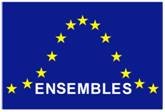
| CGAM header here |
 |
ENSEMBLES Home | Meetings | Documents | Members' Site | Participants | Links to other projects | Contact Us | Search | Milestones and Deliverables | Reporting | Job VacanciesResearch Theme (RT) webpages: RT1 | RT2A | RT2B | RT3 | RT4 | RT5 | RT6 | RT7 | RT8 |
|
Boundary Conditions
A common set of boundary conditions needed for the proposed experiments can be downloaded from here. The purpose of using common lower boundary conditions is to remove some sources of inter-model variance (e.g., sea-ice -albedo feedback) in order to better understand others. There will be no interannual variability in the boundary conditions to aid analysis of extreme events (better statistics). The files are in netCDF format with values over land being 2.0E+20 SST and sea-ice concentration for control experiments
SST and sea-ice concentration for 2XCO2 experiments
Greenhouse gases The Greenhouse gas concentrations for the control experiments are the mean concentrations for the period of 1961-1990. Only CO2 concentration changes for the 2XCO2 experiments. The concentrations for the control and 2XCO2 experiments are listed in Table 1 and Table 2. Table 1 is for models that require equivalent forcings. Table 2 breaks the Equivalent CFC-11 from Table 1 into specific concentrations and is for models that require specific concentrations. Table 1: Greenhouse gases concentrations
Table 2: Decomposition of equivalent CFC-11 from Table 1
Land sea mask For for information regarding boundary conditions, please contact Buwen Dong |
| Maintained by Maria Noguer | Walker Institute , Department of Meteorology , University of Reading , Early gate, PO Box 243, Reading RG6 6BB |